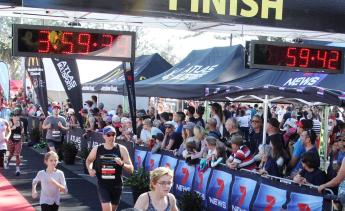Gorman finalizes work plan for soil, groundwater at Goodfellow
Eric Gorman
eric.gorman@gsa.gov
Environmental Protection Specialist
PBS Facilities Management Division
A GSA employee who has run 16 marathons — including one on every continent — finalized the process to approve a remedial investigation work plan at a “normal” pace of one and a half years.
The plan
GSA has collected a large amount of exterior soil and groundwater data at the Goodfellow Federal Center in St. Louis from 2003 to recent.
Eric Gorman’s remedial investigation work plan compiled the data, compared it to the U.S. Environmental Protection Agency generic cleanup levels, and identified where there are gaps in the data for a human health risk assessment.

The work plan also details the sampling and testing procedures to fill in those gaps.
“The best thing we did was make it truly a joint team effort between GSA, the contractor and Missouri Department of Natural Resources,” Gorman said. “We brought all of the stakeholders together with regular meetings and regular data sharing to make sure we’re all going in the same direction, have the same vision of what the outcomes are going to be, and how we’re going to mitigate through those.”
The plan has several purposes including:
- What GSA will do to fill data gaps.
- How specifically to carry out that work, such as methods, quality control measures, and reporting.
- Assurances that the data collection, risk assessment, and reporting are done to the highest quality under the CERCLA process [PDF - 693 KB].
The findings
The existing data Gorman reviewed showed that while there are some chemical exceedances in the soil, they are not as widespread as expected.

“We’re hoping and assuming that further data collection will affirm those data trends,” Gorman said.
The risk of encountering contaminants in the soil and groundwater is low, and the magnitude of exposure varies, according to Gorman.
He assesses risks involved in many scenarios such as those for current and future commercial or industrial workers, construction workers, trench workers, and future hypothetical residents.
“The RIWP will help with getting all of the data and understanding what’s truly out there,” Gorman said.
The RIWP is one step in the CERCLA process [PDF - 693 KB], which GSA is voluntarily following in preparation for transferring ownership of the property sometime around 2024.
“It’s important and noteworthy, because the CERCLA process is a very long, time-consuming iterative, ‘marathon’ of a process,” Gorman said. “Getting the RIWP approved is the first milestone in accomplishing these steps and procedures. It allows us to know about the risk and how we can effectively mitigate those risks.”

 U.S. General Services Administration
U.S. General Services Administration
